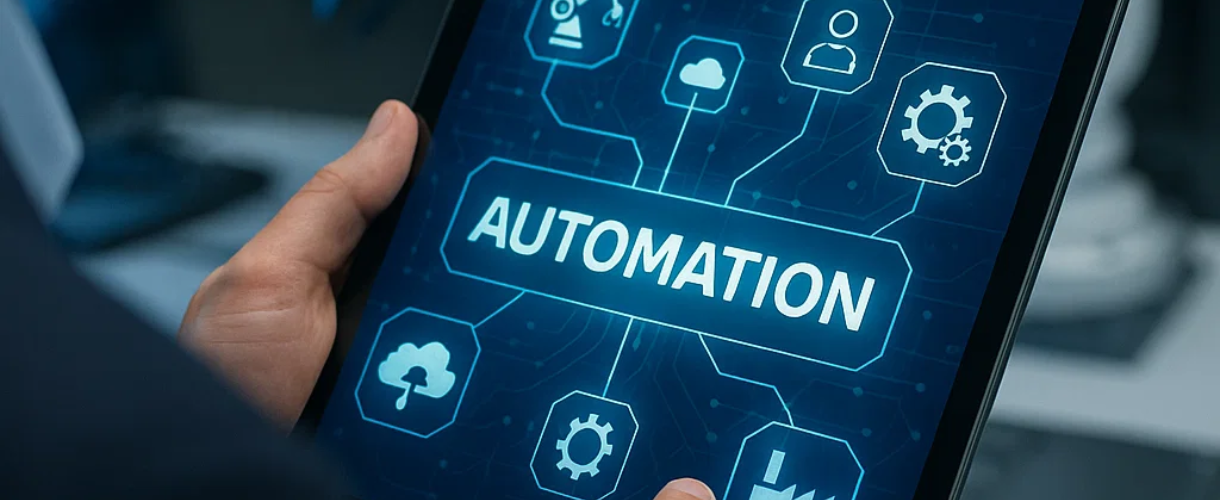Imagine a government department where paper invoices stack up on desks, emails get buried, and payment approvals take weeks, sometimes months. Audit trails are incomplete, human errors are common, and vendors are left chasing overdue payments. For public sector employees and administrators, managing invoices is often less about strategy and more about putting out fires.
This isn’t just inefficient—it’s costly.
This blog will explore how AI Invoice Automation in Public Sector is solving these issues, cutting costs, improving accuracy, and transforming financial operations. We’ll walk through how it works, the real benefits, how governments around the world are using it, and how Kuhnic supports agencies in making this shift seamless and secure.
What Is AI Invoice Automation in Public Sector?
At its core, AI Invoice Automation in Public Sector uses artificial intelligence and machine learning to streamline the invoicing process from receipt to payment. Research by the Institute of Finance & Management (IOFM) found that the average cost to manually process an invoice in the public sector is $15 to $40 per invoice. Factor in thousands of invoices a year, and that’s millions in unnecessary spending. Unlike traditional automation, AI adapts and learns from historical data to flag errors, detect fraud, and optimize workflows over time.
Key Capabilities:
- Intelligent data extraction from PDFs, scans, and emails
- Duplicate and fraud detection using pattern recognition
- Automated matching of purchase orders, goods receipts, and invoices (3-way matching)
- Predictive analytics for cash flow and payment forecasting
- Seamless integration with ERP and public financial management systems
Why the Public Sector Needs AI Invoice Automation?
1. High Volume and Complexity of Invoices
Public sector organizations handle thousands of invoices monthly, from vendors, contractors, and service providers. These invoices often vary in format and complexity. AI Invoice Automation efficiently processes this high volume by extracting data from different document types, reducing manual workload, and speeding up approval times.
2. Manual Errors and Compliance Risks
Human data entry is prone to errors like duplicate payments, incorrect amounts, or misclassified vendors. In the public sector, such mistakes can lead to compliance violations and public scrutiny. AI systems can automatically validate data, flag anomalies, and ensure invoices meet regulatory and policy requirements before payment.
3. Delays and Vendor Relationship Strain
Manual processes often cause payment delays, frustrating vendors and damaging long-term relationships. AI automation speeds up the workflow, from invoice capture to approval, ensuring timely payments and stronger vendor trust, which is crucial for public service continuity.
4. Lack of Visibility and Audit Readiness
Many public sector agencies struggle with real-time tracking of financial liabilities, pending payments, and audit trails. AI provides centralized dashboards and digital audit logs, making it easier to generate reports, respond to audits, and ensure financial transparency.
5. Budget Constraints and Demand for Efficiency
With increasing budget pressures and limited staffing, public agencies must do more with less. AI Invoice Automation reduces the need for manual intervention, lowers processing costs by up to 80%, and frees up staff to focus on strategic initiatives, not repetitive tasks.
Ready to See What AI Solutions Can do for Your Business?
Benefits of AI Invoice Automation in Public Sector
1. Significant Cost Savings
By eliminating manual entry and errors, agencies can cut processing costs by over 70%. According to the U.S. Government Accountability Office (GAO), automation saved one federal agency $500,000 in the first year alone.
2. Faster Invoice Processing
AI reduces the invoice cycle from 30+ days to under 5 days, enabling faster payments, avoiding late fees, and improving supplier trust.
3. Improved Accuracy and Compliance
AI checks each invoice against past data, contractual terms, and regulatory frameworks to ensure 100% compliance.
4. Real-Time Insights
Dashboards give finance teams instant visibility into pending liabilities, outstanding payments, and budget burn rates.
5. Enhanced Fraud Detection
Machine learning algorithms identify unusual billing patterns or duplicate submissions, alerting teams before money is lost.
How Kuhnic Enables Smarter Financial Management?
Kuhnic helps government departments modernize their invoice processing systems without disrupting existing workflows.
Here’s how Kuhnic adds value:
AI-Powered Invoice Hub: Automatically captures, digitizes, and routes invoices for approval.
Zero Disruption Deployment: Integrates with existing ERP and financial systems like SAP, Oracle, and Microsoft Dynamics.
Audit-Ready Records: Keeps an immutable log of all invoice activities, making audits faster and more accurate.
Machine Learning Models: Continuously learn from user actions and historical data to improve processing accuracy.
Vendor Portals: Offer suppliers real-time invoice status, cutting down on email inquiries and follow-ups.
Kuhnic empowers public organizations to do more with less—ensuring taxpayers’ money is spent where it matters most.
How to Get Started with Kuhnic
We understand that transforming finance operations in the public sector can seem daunting. That’s why Kuhnic offers end-to-end support from evaluation and planning to implementation and optimization. Explore our solutions or see real-world case studies.
Conclusion
AI Invoice Automation In Public Sector is revolutionizing financial management for government agencies. By eliminating manual errors, accelerating payment cycles, and enhancing compliance, AI-driven automation delivers tangible benefits: higher productivity, reduced costs, and better service to citizens and suppliers alike. Real-world examples and empirical data confirm that the shift to AI is not only possible but essential for modern public sector organizations.
Ready to transform your financial management with AI Invoice Automation In Public Sector? Contact us today to connect with a Kuhnic expert and get started on your journey to greater efficiency, transparency, and success.
FAQs
1. How does Kuhnic’s solution specifically help public sector agencies?
Kuhnic’s AI-powered platform is built with public sector needs in mind. It automates repetitive tasks, improves compliance, integrates seamlessly with government ERP systems, and reduces invoice cycle times significantly. This helps agencies optimise taxpayer funds and improve transparency.
2. Is AI Invoice Automation in Public Sector secure and compliant?
Yes. Kuhnic ensures compliance with major public sector standards like GDPR, HIPAA, and FedRAMP. All data is encrypted in transit and at rest, with detailed audit logs for every invoice processed.
3. Can Kuhnic integrate with our existing ERP system?
Absolutely. Kuhnic supports integrations with legacy and modern ERP systems including SAP, Oracle, Dynamics, and custom-built platforms used in government finance departments.
4. What kind of cost savings can be expected?
Public sector organizations typically see cost savings between 60-80% in invoice processing. Kuhnic clients often recover implementation costs within the first year through reduced labor, fewer errors, and faster payment cycles.
5. How long does it take to implement Kuhnic’s AI solution?
Implementation timelines vary based on complexity, but most public agencies are fully operational within 6–12 weeks. Kuhnic offers white-glove onboarding, dedicated support, and comprehensive training to ensure success.




